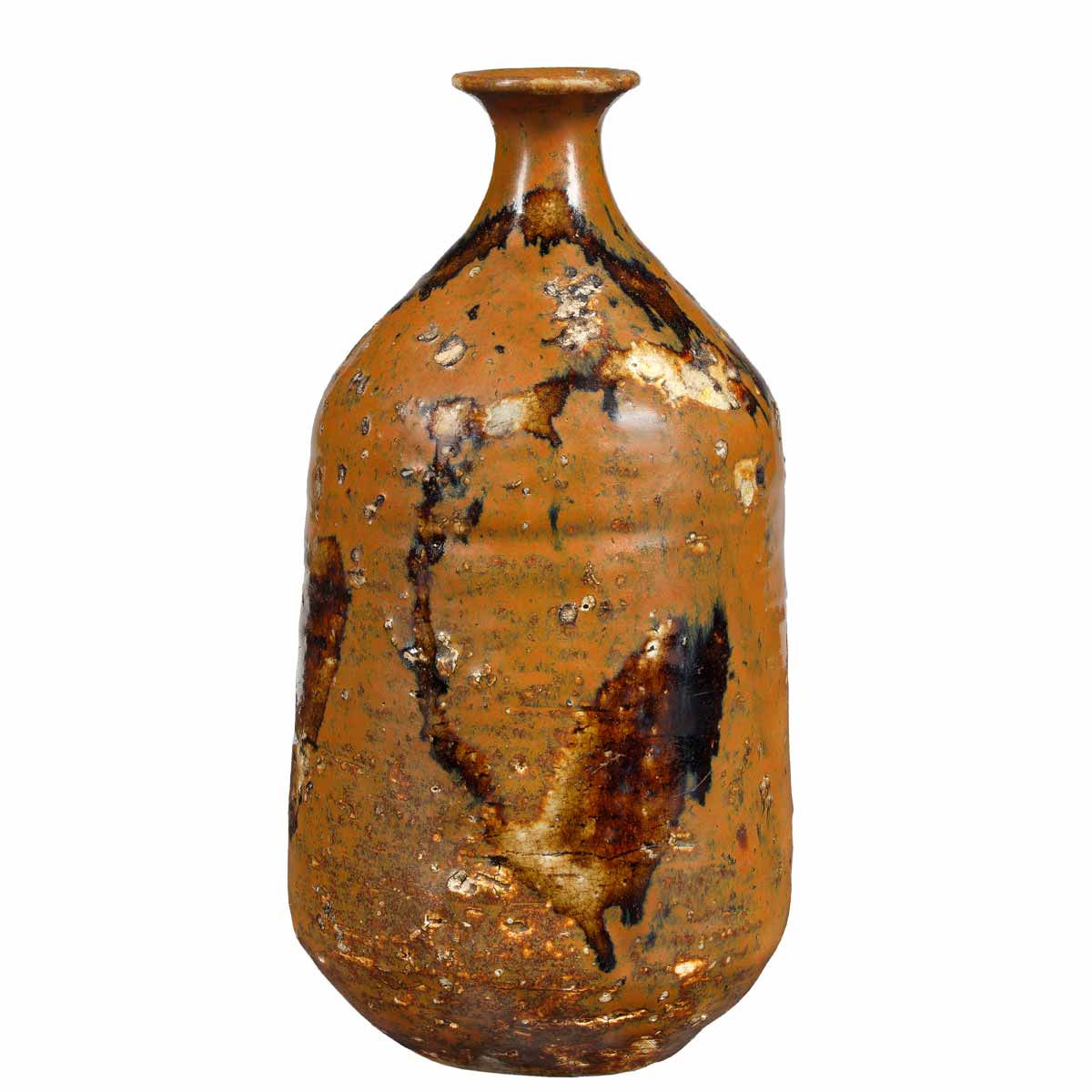Tokkuri Kujiri
Ceramic
- Contact Us
-
Material
Ceramics from Seto (Mino region)
-
Size
19 (h) x 9.4 x 9.4cm
-
Period
Edo period, 17th – 18th century
-
Box
Awasebako
Description
Kujiri Kizeto Tokkuri
Sake bottle
The Kujiri kiln in the Mino region was active between the end of the 16th century and the 18th century.
Ki Seto ware, yellow-toned ceramic ware made from fine, white clay covered with iron-ash glazes in the Mino area in central Honshu, Japan, from the late Muromachi period (1338–1573) onward.
Ki Seto (“Yellow Seto”) is divided into two main types: a glossy chartreuse yellow (guinomi-de, or kikuzara-de), fired at a relatively high temperature, and a soft dull-glazed pure yellow (ayame-de, or aburage-de), fired at low heat.
The fine Ki Seto wares of the late Muromachi period are believed to have been produced at such kiln sites as Kujiri, Gotomaki, Jorinji, and Akasaba, where temmoku glazed bowls were also produced.
Later, in the Azuchi-Momoyama period (1574–1600), the intensity of Ki Seto’s yellow deepened, achieving the great warmth of tone for which it is known. In addition to tea utensils, various types of plates, bowls, and flower vases were made. A type of decorated ware known as tampan was especially popular with tea cult devotees. Tampan was painted with pictorial designs executed in a pale-green copper glaze.
